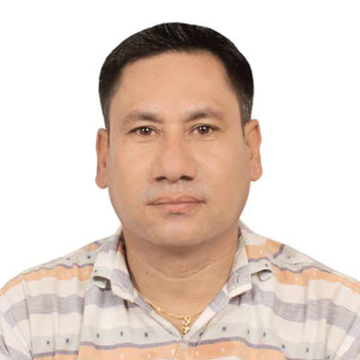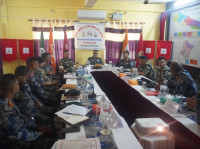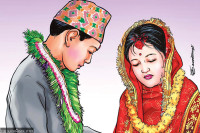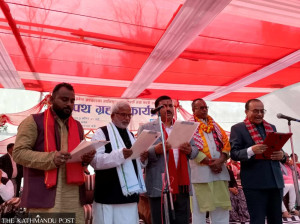Madhesh Province
Rautahat poorest district in Province 2, policy commission says
According to the report, Mahottari and Sarlahi are the second and third multi-dimensionally poorest districts, respectively, in the province..jpg&w=900&height=601)
Shiva Puri
Rautahat is the district with most municipalities in the country, with 16 municipalities out of 18 local units. It is also a district with one of the lowest Human Development Index ratings—0.387—in the country, which is lower than that of several districts in the Karnali such as Jumla, Dolpa and Mugu. And, according to a recent report released by Province 2’s Policy Commission, it is the multi-dimensionally poorest and least literate district in the province. It has 46.43 percent of its population under the multidimensional poverty index (MPI) and 58 percent illiterate population, including 45 percent male and 63 percent female.
According to the report, Mahottari and Sarlahi are the second and third multi-dimensionally poorest districts, respectively, in the province. On average, the district has a multidimensional poverty index of 47.9, much lesser than the national average of 28.60. MPI takes into account multiple deprivations at the individual and household level in health, education and standard of living, among others. Among other districts in the province, Saptari has 0.437 MPI, Siraha 0.408, Dhanusha 0.431, Mahottari 0.388 and Sarlahi 0.402. Bara and Parsa have 0.386 and 0.464 MPIs. The province has an economic poverty index of 27.7 percent. This is the third poorest rating in the country. The province recently introduced a five-year plan to improve its economic poverty index to 21 percent.
Chief Minister Mohammad Lalbabu Raut said his government is using its entire resources to reduce poverty in the province.
“Going by the indexes, we have a lot to do and we are up for it,” said Raut while on a recent trip to Rautahat. Rautahat is home to one of the most underprivileged tribes in the country—the Musahars. The hundred Musahar households of Chandrapur Municipality-9 do not own any land, with most of them working at nearby brick kilns. According to Sukhal Musahar, a resident of Chandrapur, he and his neighbours work for 10 hours a day for which they get paid Rs600; the women get paid Rs500.
“We are surviving on this, but when we don’t get work, we have to sleep hungry,” he said.
Bijay Kishore Jha, a social worker, said there are many underprivileged settlements in the district whose members depend on labour work for survival.
“The people of underprivileged communities such as the Musahar engage in menial work from very early in life. They don’t have the time and resources to get an education,” Jha said, pointing to the reason behind the district’s high illiteracy rate. “Corruption is widespread in local units.”
Devprasad Timalsina, a lawmaker from the Nepali Congress, said that many drives to improve the district’s status in education and health sectors have been ineffective.
“The facilities aimed for underprivileged communities are interfered with by those with access,” he said. “Government services haven’t reached where they are intended. The condition of infrastructure is poor. Discriminations based on caste and gender are rife, and superstitions are still widespread. Given these reasons, it’s not surprising that the district fares poorly in socio-economic indexes.”
The Poverty Alleviation Fund, a state-owned body working towards reducing poverty, has invested Rs 8million in the district in the 11 years that it’s been active. The Fund had established 2,385 small committees to reduce poverty. But the drives seem to have little effect.
Ram Ekwal Rae Yadav, chair of the District Coordination Committee, said the main problem behind the growing rate of poverty in the district is unemployment.
“The district does not have enough industries. The quality of education is on the decline. Floods affect the district every year,” he said. “And lately, arable lands are left barren owing to uneven patterns of the rain.”




 14.12°C Kathmandu
14.12°C Kathmandu













